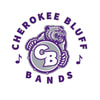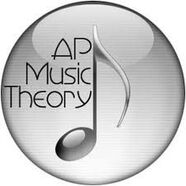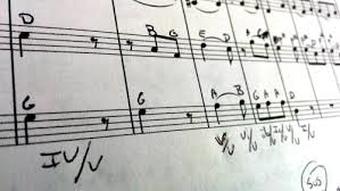AP MUSIC THEORY
2nd PERIOD: ROOm 3406
Instructor: J. Craig Cantrell Office Phone: 770-967-0080 ext. 748
Email: [email protected] Conferences/Tutorials: Before School / By appointment
Email: [email protected] Conferences/Tutorials: Before School / By appointment
OVERVIEW
The AP Music Theory course emphasizes advanced study of musical structure, form, analysis, part-writing, and advanced terminology. This college level course is fast-paced and rigorous, which is designed to prepare students to take the Advanced Placement Exam for college credit.
OBJECTIVES
By the end of this course, students should have a mastery of the rudiments and terminology of music, including hearing and notating: pitches, intervals, scales and keys, chords, meter, rhythm. Also, the student should be competent in melodic and harmonic dictation, composing using specific part-writing rules, realizing a figured bass and Roman numeral progressions, analysis of repertoire, and sight-singing.
TEXTBOOK
Kostka, Stepfan, and Dorothy Payne. Tonal Harmony: With an Introduction to Twentieth-Century Music. 5th ed. New York: McGraw Hill, 2004
REQUIRED CLASS MATERIAL
All students are required to have the following materials daily:
*Pencils (all work & exams submitted to the instructor MUST be written in pencil unless your work is completed in a music notation program)
*Notebook Paper
*Standard 1" 3-ring Binder
*Pencils (all work & exams submitted to the instructor MUST be written in pencil unless your work is completed in a music notation program)
*Notebook Paper
*Standard 1" 3-ring Binder
Recommended Class Material
Clipboard
Manuscript Paper
Manuscript Paper
Major projects and exams
- Unit Tests (Affirmation of Knowledge) - at least two each nine-weeks
- Class Recital
- A test grade for the first nine-weeks will be a recital for your classmates and invited guests. All students will be expected to participate. More information will be given in ample time to prepare for the recital.
- Concert Attendance
- Another one of your Affirmation of Knowledge grades will be based on your attendance at a concert. Beginning after the Class Recital, each student is required to attend four (4) live performances of classical/mainstream music over the course of the year. There are five categories that must be fulfilled. You must attend a concert:
- Featuring a professional ensemble
- Featuring a collegiate ensemble
- One each of high school band or chorus concert
- NOTE: You cannot count any concert in which you had a role, even a small role. Middle School concerts do not count. You can finish this requirement early, but you must have at least one or two categories filled each nine-weeks. The procedure for filing these concerts and a rubric will be reviewed in class.
- Another one of your Affirmation of Knowledge grades will be based on your attendance at a concert. Beginning after the Class Recital, each student is required to attend four (4) live performances of classical/mainstream music over the course of the year. There are five categories that must be fulfilled. You must attend a concert:
Grading
Grades will be weighed as follows:
Grading Penalties:
- 45% Daily Assignments (Quizzes, Homework, In-Class Assignments)
- 35% Assessments of Knowledge (Chapter Tests, Unit Tests)
- 10% Compositions & Projects (two projects/compositions each semester)
- 10% Concert Reports (two reports each semester)
Grading Penalties:
- 1 day late = 25 points deducted from the grade
- 2 days late = 50 points deducted from the grade
- 3 days late = no credit
- Minus 20 points per day late
- Assignment must be turned in no later than the nine-week grading period for 50% credit.
Classroom Expectations
As an AP Music Theory student you are expected:
- To listen and pay attention
- To be respectful while others are talking or working
- To refrain from eating during class
- To abstain from any cell phone use (cell phones should not be out or seen)
- To raise your hand before asking relevant questions or leaving the room
- To have your materials daily and take notes
- To be accountable and responsible for your work and success
- To be the BEST student you can be!
CURRICULUM MAP - PACING GUIDE - COURSE CALENDAR
Course Outline & Timeline
Fall Semester (Units 1-4): August – December
Fall Semester (Units 1-4): August – December
|
Unit 1 {Week 1-4} Music Fundamentals I
Ear Training: simple step-wise diction up to 10 note patterns, emphasis will be placed on directional movement in diatonic settings (melodic dictation) (Skills 3.A). Sight-singing: Introduction to solfege syllables/match pitches on pentascales. |
Unit 2 {Week 5-10} Music Fundamentals II
Ear Training: pitch and rhythm recognition/accuracy (error detection) (Skills 3.E) Sight-singing: major scales with arpeggios (on numbers, solfege, and pitch names) |
|
Unit 3 {Week 10-12} Music Fundamentals III
Sight-singing: intervals ascending/descending {<P5} |
Unit 4 {Week 13-16} Harmony and Voice Leading I
Sight-singing: Intervals ascending/descending {>P5} “Original 8 phrase melody” project presentation & Mid-Term Review {Week 17-18} |
Spring Semester (January - May)
|
Unit 5 {Week 19-22} Harmony and Voice Leading II
Sight-singing: diatonic melodies with leaps of an octave or less. |
Unit 6 {Week 22-24} Harmony and Voice Leading III
Sight-singing: diatonic with arpeggiations of I, ii, IV, V7, vi chords / arpeggios in 7ths |
|
Unit 7 {Week 25-27} Harmony and Voice Leading IV
Sight-singing: melodies with chromatically altered notes (Secondary Functions) |
Unit 8 {Week 28-29} Modes and Forms
Sight-singing: modulation to closely related keys through secondary dominants or sequence. |
Additional Topics of Study:
Depending on Time and level of class, the following chapters may be covered as further enrichment.
Depending on Time and level of class, the following chapters may be covered as further enrichment.
- Mixing the modes (borrowed chords) (Chapter 21)
- Augmented 5th chords (Neapolitan Chord, Italian/German/French Augmented 6th chords) (Chapter 22 &23)
- Resolution of Augmented 6th chords, and Enharmonic Spellings and Modulations
|
THEORY RESOURCES
|
EAR TRAINING RESOURCES
|
SIGHT-SINGING RESOURCES
|



